Introduction
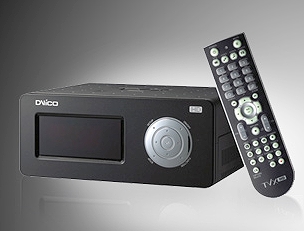 Over the last two years, the Korean company DViCO has proven to be a worthwhile player in the media streamer market. The company is now producing its third generation in the TViX family of products: the TViX HD-M4100SH.
Over the last two years, the Korean company DViCO has proven to be a worthwhile player in the media streamer market. The company is now producing its third generation in the TViX family of products: the TViX HD-M4100SH.
The first generation focused on SD contents, allowing SDTV video and audio files such as MP3 and DiVX to play on your TV and audio system without a problem.
The second generation (TViX 4000 and 5000, which was reviewed at Secrets) introduced HDTV support – WMV HD, DiVX HD, and MPEG-2/TS HD support.
As the industry evolved, so did the TViX boxes. The 4100 and its round equivalent, the TViX 5100 are now capable of supporting VC-1 (WMV and M2TS containers), H264 (Quicktime, MKV, AVI ,and MPEG/TS containers), and high bandwidth MPEG-2 files.
Specifications
- Video formats: HD Quicktime, AVC, HD MKV (H264 and DiVX based), DiVX HD, WMV-HD, VC-1, MPEG-2, H264, ISO, M2ts, and TS files
- Audio formats: Shoutcast,MP3, FLAC Lossless
- Connections: Two USB-2, One Component Video, One S-Video, One Composite Video, One Coaxial Digital Audio, One Toslink Digital Audio
- Ethernet (10/100Mbps)
- Dimensions: 3″ H x 7.5″ W x 5.6″ D
- Weight: 2.2 Pounds
- MSRP: $379 USA
Such streamers are touted as a potential competition to the emerging media server market. Simple dedicated boxes, capable of decoding and playing back media files are slowly gaining acceptance and in the future could be very popular if and when producers start to sell HD content for $1/episode, or distribute free HD content over the Internet, embedded with commercials.
The Design
The unit is box shaped like the other 4XXX series players, with a front LCD display. The units and introduces quite a few new features over the previous generation of players. First, an HDMI output replaces the aging DVI connector on the older units. This is an HDMI 1.1 output, which means that high rez audio will not play over HDMI. Also new is the support for an internal SATA drive, which replaces the IDE connector on the TViX 4000/5000.
Secrets Sponsor
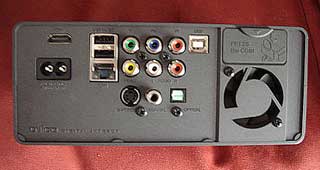 The unit does contain a fan that cannot be disabled. Sadly, no automatic option is available on the unit, so changing fan speeds must be done manually. Using the slowest option, the unit is fairly silent (assuming you have purchased a quiet drive). Slower fan speed causes the unit’s temperature to climb, which means the drive lifetime will be shortened – I would have appreciated a way to select fan speed based on time of day. I really don’t mind the unit being noisy during the day. I can only hear the fan, after all, when all is quiet around the house.
The unit does contain a fan that cannot be disabled. Sadly, no automatic option is available on the unit, so changing fan speeds must be done manually. Using the slowest option, the unit is fairly silent (assuming you have purchased a quiet drive). Slower fan speed causes the unit’s temperature to climb, which means the drive lifetime will be shortened – I would have appreciated a way to select fan speed based on time of day. I really don’t mind the unit being noisy during the day. I can only hear the fan, after all, when all is quiet around the house.
Connecting a drive to the unit is simple and easy, but does require screwing a rail onto the side of the drive. Just plug in the power and the SATA connector, and the drive disappears into the tiny unit.
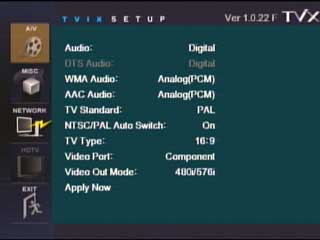 The graphical user interface is quite similar to that of the previous generation of TViX players. Moving between the local drive and the network drive (NFS using a custom utility and SMB are supported) or the USB external drives (FAT32 and NTFS supported) requires an unintuitive left arrow click on the remote. The company should really address this, as while the unit is quite easy to use after some experience with it, a GUI overhaul is a long time coming.
The graphical user interface is quite similar to that of the previous generation of TViX players. Moving between the local drive and the network drive (NFS using a custom utility and SMB are supported) or the USB external drives (FAT32 and NTFS supported) requires an unintuitive left arrow click on the remote. The company should really address this, as while the unit is quite easy to use after some experience with it, a GUI overhaul is a long time coming.
One nice feature that the 4100 supports is that if you place a very specific file (file name and image dimensions are critical), you can change the background image. Another skinning feature is the ability to turn a specific directory into a jukebox style player, with each file name accompanied by a small thumbnail image. This is quite useful for putting this type of player in the kids room or as a jukebox implementation. Coupled with the fact that the unit will always go into a directory called “Video”, this lets you use the unit in several interesting scenarios.
Secrets Sponsor
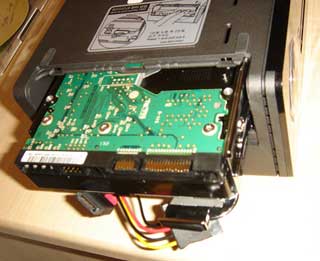 As always, you must format the hard drive before putting one into the unit, or connect to a computer via the USB host jack and format it from the computer. NTFS format is supported, and with the latest beta software, I was able to play high bit rate (I used VBR content up to 36 Mbps for the test) 1080p content with only an occasional blip or hang-up.
As always, you must format the hard drive before putting one into the unit, or connect to a computer via the USB host jack and format it from the computer. NTFS format is supported, and with the latest beta software, I was able to play high bit rate (I used VBR content up to 36 Mbps for the test) 1080p content with only an occasional blip or hang-up.
This is more than I can say for all of the computers I have around the house. Just try to play a 1080p MKV/H264 file on them and watch the sweat pour out of the CPU as the fan tries to compensate for the rising heat. No matter how hard I try, a computer costing 3x the cost of this unit still refuses to play such content without stuttering.
In Use
To put content on the unit, you can copy using the USB-2 host connection. You can also stream the movies from the network or through USB-2 external drives. I found that higher profile content (VC1/H264/AVC) had a much harder time streaming over the network. While MPEG-2 files played flawlessly over Ethernet at rates of 25 Mbps and upwards, 20 Mbps H264 stuttered repeatedly over the network and even USB-2 external drive. However, on the internal drive, they played just fine. DViCO should really address this if they can, unless it is a hardware limitation of some kind.
A new alternative to taking the unit to the room where the computer is located, is the ability to copy files from the network onto the computer. Vice versa also theoretically works, but only with files that are smaller than 2 GB. Complementing this ability is the delete button the remote, which lets you delete the files you watched and make room for other files.
As with the previous generation, the unit also sports an FTP connection that lets you connect to the unit remotely using an FTP program like FileZilla or CuteFTP. This FTP daemon can slow down playback, so don’t try to copy heavy files while playing back full HD content. It also supports a single file copying stream, but this is a nice feature. I wish it has a simpler SMB interface that would let me copy files directly from any computer without needing any additional software. The FTP server is not the most stable in the world, each unit will have its own unique FTP password (a product of its internal serial number or MAC address), but this does let you distribute content from a central storage to remote units. If, for some reason, you prefer not to rely on central storage (like a server or a computer that will contain your content), and you have several units, this can be a very nice alternative.
 The 4100 supports the SMB (simple message block) file protocol. In the past, this was too slow to support HD files, so DViCO implemented the NFS (network file system) UNIX remote file system. While this seriously improves performance, it does have the disadvantage of being a non-standard protocol for this type of implementation. Most boxes of this nature (e.g., Snazzio, Ziova, IAMM) now support UP&P as a universal solution for sharing content.
The 4100 supports the SMB (simple message block) file protocol. In the past, this was too slow to support HD files, so DViCO implemented the NFS (network file system) UNIX remote file system. While this seriously improves performance, it does have the disadvantage of being a non-standard protocol for this type of implementation. Most boxes of this nature (e.g., Snazzio, Ziova, IAMM) now support UP&P as a universal solution for sharing content.
I have several different streaming boxes (some audio, some video) around my home, most of which use UP&P. DViCO offers a free file sharing utility for NFS, however, this software is way too simple. First of all, you must be logged in to run it (it is not a “service” or “daemon” that runs in the background even when my computer has just booted and is at the log in page). It also supports only a single entry point into your content library. That means you have to resort to tricks if your disk space runs out (which does tend to happen a lot when FULL HD content is involved). Still, even with NFS in use, new AVC and VC-1 content at bit rates around 20 Mbps stuttered heavily on my 100 Mbps network.
The 4100 supports DVI and HDMI modes, including overriding the notorious HDMI Auto-EDID directive that can lead to a player and display dropping to a lower resolution because of minor incompatibles in the protocol. The unit can also de-interlace 1080i content and output 1080p. I noticed no real difference between de-interlacing on the unit itself vs. through a video processor (Anchor Bay’s VP50Pro and Lumagen HDP Pro), which probably means it’s doing a darn good job at it. You can also choose if you want RGB or YUV color gamuts, but I found virtually no perceivable difference in picture quality when switching between the modes.
The unit also supports automatic sensing of content that is 50 Hz vs. 60 Hz and can auto switch to the correct output rate. This is a real benefit to users who have, for example, both NTSC and PAL DVDs laying around the house, or even HD content at the various rates. This is one of the biggest benefits of the unit, and the latest beta firmware also supports 24p output over 1080p as well!
 The 4100 can pass through AAC and WMA content or decode the front two channels to PCM audio. My receiver is incapable of decoding these two streams, which meant I was limited to stereo sound when watching such content.
The 4100 can pass through AAC and WMA content or decode the front two channels to PCM audio. My receiver is incapable of decoding these two streams, which meant I was limited to stereo sound when watching such content.
Audio wise, the unit will output the audio through HDMI (when output mode is selected as HDMI), as well as the coax/SPDIF outputs. The unit can play Shoutcast playlist files, which means that a properly configured unit will be able to play radio stations from all around the world. However, the unit will not support video streaming, probably due to the low quality of such transmissions today. Another missing feature is the ability to directly download firmware updates from the Internet. The unit knows how to download content, it knows how to save it to disk, why can’t it merge these two abilities is not something I can really comprehend. Moreover, the company is quite active in introducing major new features via firmware updates.
A recent firmware updated the unit and added support for the much coveted MKV (Matroska) file format. This file format typically employs the H264 codec and is slowly overthrowing DiVX as the codec of choice over the Internet. This is mostly because of how good the image is, even with very compact file sizes. MKV files originate by either conversion of the original MPEG-2 contents into H264 and into the MKV container, or even as just a container for original H264 files.
The picture quality that the unit outputs is fantastic. High bit rate demo units easily compete with the leading Blu-ray and HD DVD players out there. Scaling wise, DVD content is ok-ish, but you can do better with a good upscaling DVD player.
The concept of having a huge DVD collection as the original discs accessible to the kids is incomprehensible to me. I love my kids, but give them 10 minutes and they’ll convert your precious DVD collection into a scratched skipping nightmare.
So, you can take your aging DVD collection and use a ripping program that leaves the entire ISO intact. The result, a file ranging from 3-11GB will contain not just the movie, but will also leave the menus and extras intact.
Select this ISO file and press OK and the TViX will play them over the network without a problem.
Legal HD content is a bit harder to come by, but most HD video cameras these days use TS or MT2S files. My own Sony HDTV camera records video as M2TS files using HDTV MPEG-2 at bit rates around 25-26 Mbps, resulting in a stunning HDTV image when played back on the TViX unit. The same applies to AVCHD cameras – utilizing the H264/AVC inside an M2TS and TS MPEG container.
The Apple Quicktime trailer website is also a cool source for high quality high def content. The equivalent Microsoft WMV site is also of interest, but usually lacks any updated content.
Looking at W6RZ MPEG-2 HD test patterns, I can easily tell that the unit passes all bandwidth tests – showing that there is no drop off in image quality when compared to the original source.
International users usually require subtitle file support. The 4100 supports SRT files, however it is quite limited in the type of fonts that it supports (mostly, the west European variety). The unit does, however, support SUB/IDX format – a graphical format that is internally used for DVD players. Using the “SubtitleCreator” program, it took me about 20 seconds to convert SRT files into this format with full control over subtitle placement, font size, font type, and colors. Still, support for international character pages for menus, subtitles and file information (e.g., MP3 playback) would be really appreciated by DViCO’s international customer base.
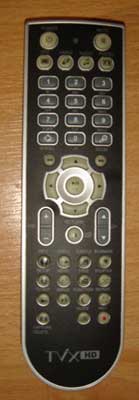 The remote control is essentially identical to the TViX 4000 remote but an improvement over the TViX 5000’s remote. It is very compact and slick.
The remote control is essentially identical to the TViX 4000 remote but an improvement over the TViX 5000’s remote. It is very compact and slick.
Finally, in the US and Europe, the 4100 and its waste-paper-basket shaped equivalent the 5100, come with optional tuners for DTV and DVBT. On the 4100, the tiny tuner slips into a matchbox shaped hole on the unit above the fan. On the 5100, the round tuner sits below the unit. While I have not had any experience with these two tuners (sadly, neither DVBT nor DTV is being transmitted in my area), I am told that recording content is quite simple, albeit the unit does lack time based recordings. Recordings can be played back on the unit itself or transported to another unit and played there. The 4100 does not have server software capable of allowing another unit to actively stream contents directly from it.
Conclusions
So, what’s next for DViCO? The company has hinted at upcoming announcements of its next generation products towards early Q1 2008. The new units can’t really offer support for additional file formats, because the 4100 basically covers almost the entire spectrum today. Areas that need improvement on this unit are network streaming of heavy advanced-profile formats and the User Interface.


